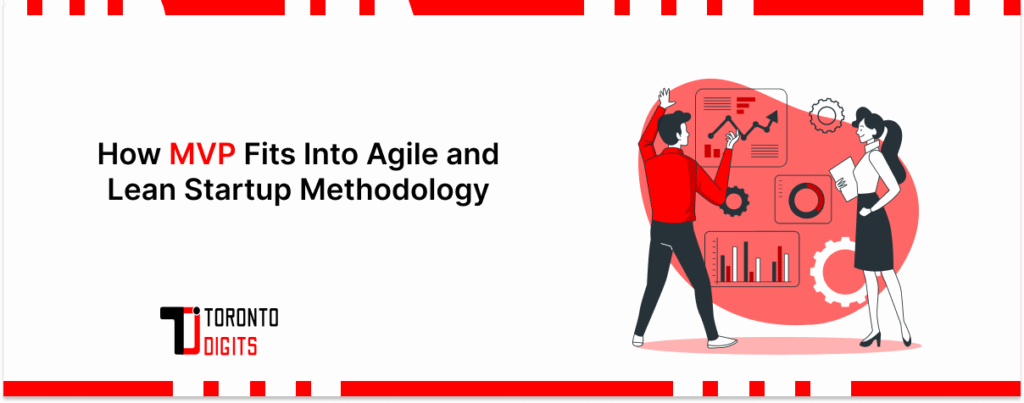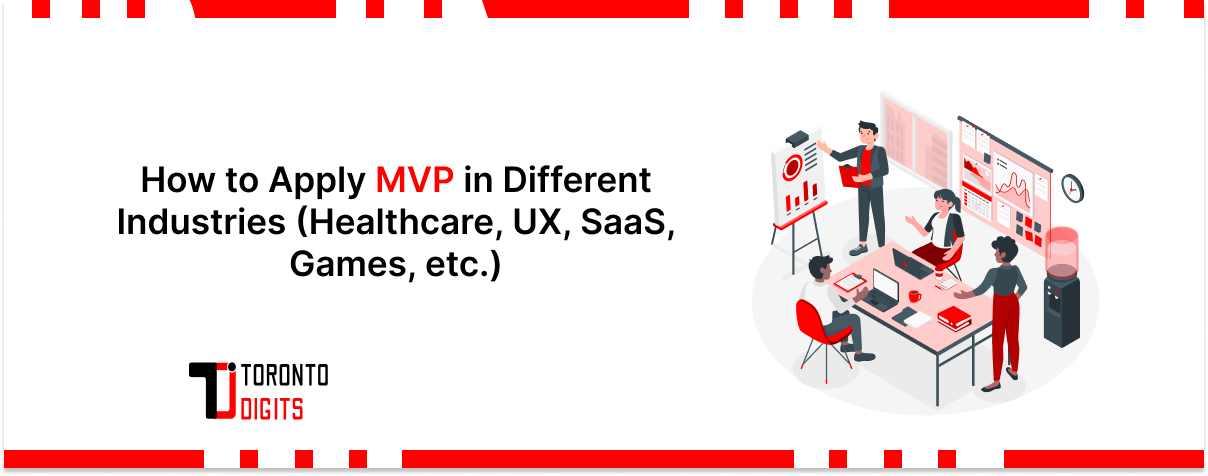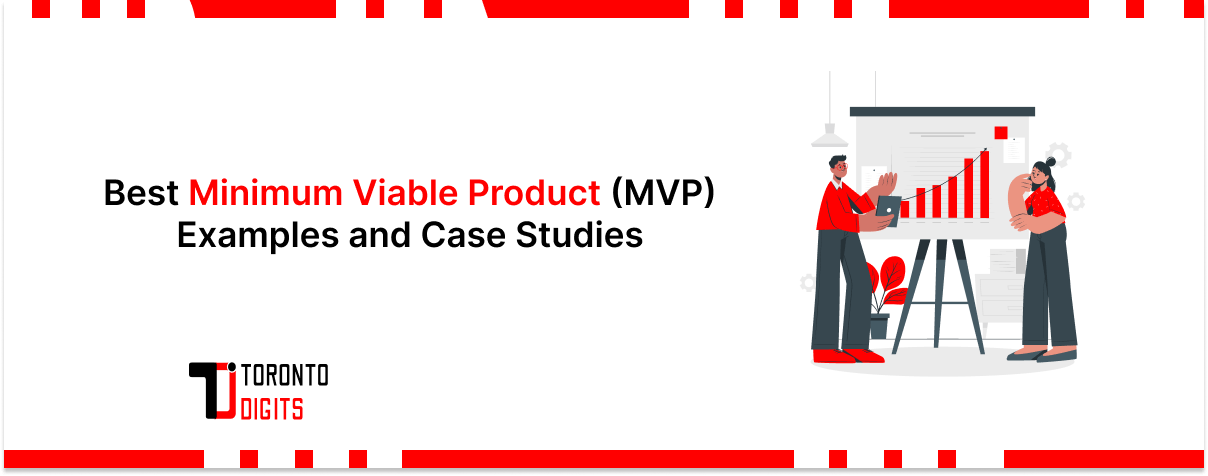Bringing a new product idea to life is exciting, but it can also be risky. That’s where building a Minimum Viable Product (MVP) comes in—it’s one of the smartest ways for startups to test an idea quickly, gather real feedback, and turn concepts into working solutions.
The problem? Many startups fall into the trap of rigid development processes. Sticking to a fixed plan often slows things down, makes it harder to pivot when user needs change, and can waste precious resources on features nobody actually wants. Without room for flexibility, improvements take longer, and the chance of failure grows if the product misses the mark.
Agile MVP development offers a better way forward. By embracing short development cycles, continuous feedback, and quick iterations, startups can adapt faster, save money, and build products that users truly care about.
In this guide, we’ll break down what agile MVP development is, its biggest benefits, and why startups should lean on this approach. We’ll also cover common mistakes teams make during MVP development—and how an agile mindset helps overcome them.
Ready to see how agile can transform your product journey and set you up for long-term success? Let’s dive in.
Understanding Agile MVP Development for Startups
Agile MVP development is all about building smarter, not harder. Instead of spending months creating a “perfect” product, startups launch a simple but working version first. This early version gives real users something to try out—and their feedback helps shape the next steps.
The process is flexible, fast, and focused on learning. By prototyping quickly, listening to users, and making improvements along the way, startups can cut risks, save resources, and move closer to true product-market fit.
Big names like Dropbox and Slack started out this way, proving how powerful agile MVP development can be for turning ideas into successful products.
Top Reasons Startups Should Embrace Agile MVP Development
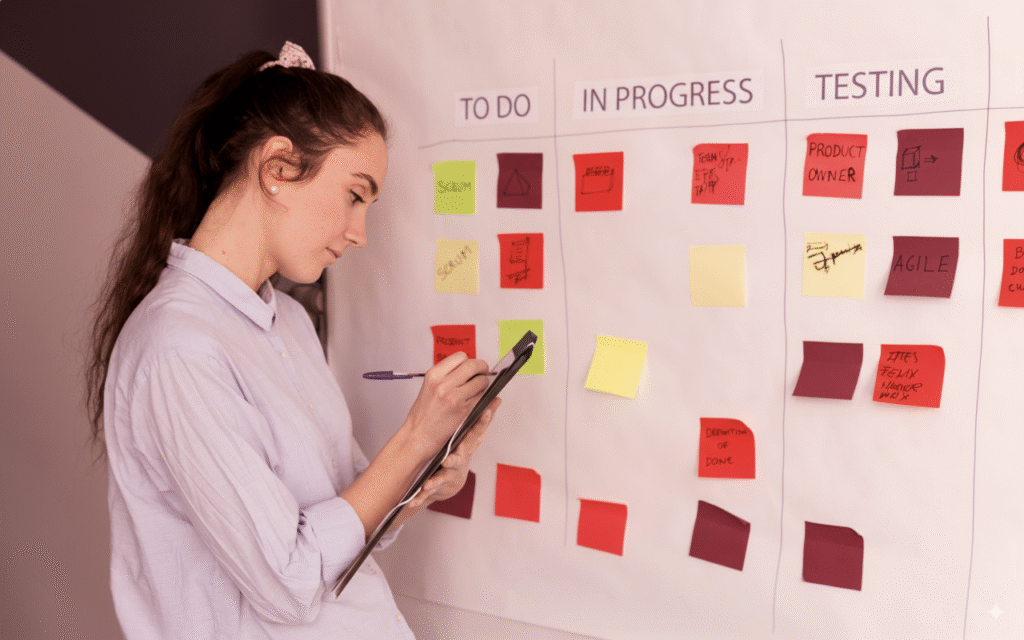
Startups operate in a world of uncertainty—tight budgets, tough competition, and ever-changing customer needs. To survive and grow, they need smart strategies that reduce risks, save resources, and focus on building products people actually want. That’s exactly what the minimum viable product approach offers.
Here’s why adopting a minimum viable product strategy in Agile makes sense:
1. Lowering Risk
Every startup faces risks—financial limits, market shifts, and strong competition. Agile MVP helps reduce these risks by testing ideas early with minimal investment. By releasing small, functional versions and improving them through feedback, startups avoid costly mistakes down the road.
2. Speeding Up Launch
Instead of waiting months to release a polished product, a scrum minimum viable product focuses on essential features first. This means startups can launch quickly, attract early adopters, and fine-tune the product based on real user insights.
3. Smarter Use of Budget
With limited funds, startups can’t afford to waste money on unnecessary features. Agile MVP encourages building only what’s needed to solve the core problem. This way, resources are used wisely, costs stay low, and every dollar goes into creating real value for users.
4. Building with Users in Mind
A product only succeeds if it solves real problems for customers. Agile MVP keeps users at the center of the process by collecting feedback early, making improvements quickly, and ensuring the product fits customer needs. The result? Higher adoption, satisfaction, and engagement.
5. Staying Flexible
Markets and customer preferences can change overnight. Agile MVP gives startups the flexibility to adapt, pivot, or improve without starting from scratch. If the initial idea doesn’t work, startups can shift direction quickly—saving both time and money.
6. Setting the Stage for Growth
An MVP isn’t just about launching fast—it’s about building a foundation for future success. By starting simple and scaling gradually, startups can grow their product alongside their customer base. Plus, the feedback and data gathered during MVP stages provide a roadmap for smarter decisions and sustainable growth.
Key Features of Agile MVP Development for Startups
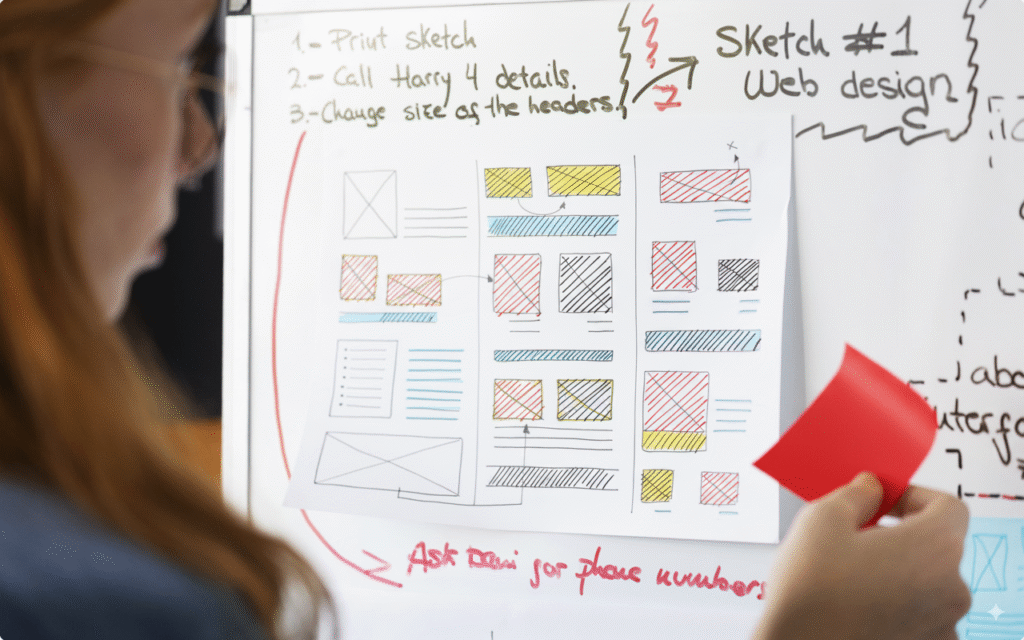
Agile MVP is all about building flexible, user-focused products that improve over time. Instead of aiming for a “perfect” launch, it focuses on quick iterations, feedback-driven changes, and adaptive planning. Let’s break down its key features:
1. Iterative Development
In agile, work is divided into short sprints. Each sprint delivers a working version of the product that can be tested and improved right away. This keeps development flexible, reduces risks, and ensures progress without wasting effort on unnecessary features.
2. Customer Collaboration
Real user feedback is at the heart of agile MVP. By engaging with customers early and often, startups can quickly refine features, fix pain points, and make sure they’re building something people actually want. This prevents wasted time on features with little value.
3. Adaptive Planning
Markets and customer needs change fast. Agile MVP allows teams to pivot when necessary by adjusting priorities based on new insights or trends. Instead of sticking to a rigid roadmap, startups stay responsive and aligned with real-world demands.
4. Continuous Improvement
After every sprint, teams reflect on what worked, what didn’t, and how they can improve next time. This culture of learning makes processes more efficient, saves resources, and strengthens the product with each iteration.
5. Cross-Functional Teams
Agile thrives on collaboration. Developers, designers, product managers, and stakeholders work together, ensuring faster decision-making and better problem-solving. This teamwork leads to a stronger, well-rounded product.
6. Rapid Delivery
Agile MVP focuses on frequent, smaller releases instead of waiting for one big launch. This means startups can get to market faster, test ideas with early adopters, and refine the product based on real usage—cutting down time-to-market significantly.
7. Built-in Quality
Quality isn’t an afterthought—it’s baked into every stage. Regular testing (both automated and manual) helps catch issues early, reduce bugs, and ensure that new features work seamlessly. This results in a stable, high-performing product from the very beginning.
Agile vs. Traditional MVP Development: Key Differences for Startups
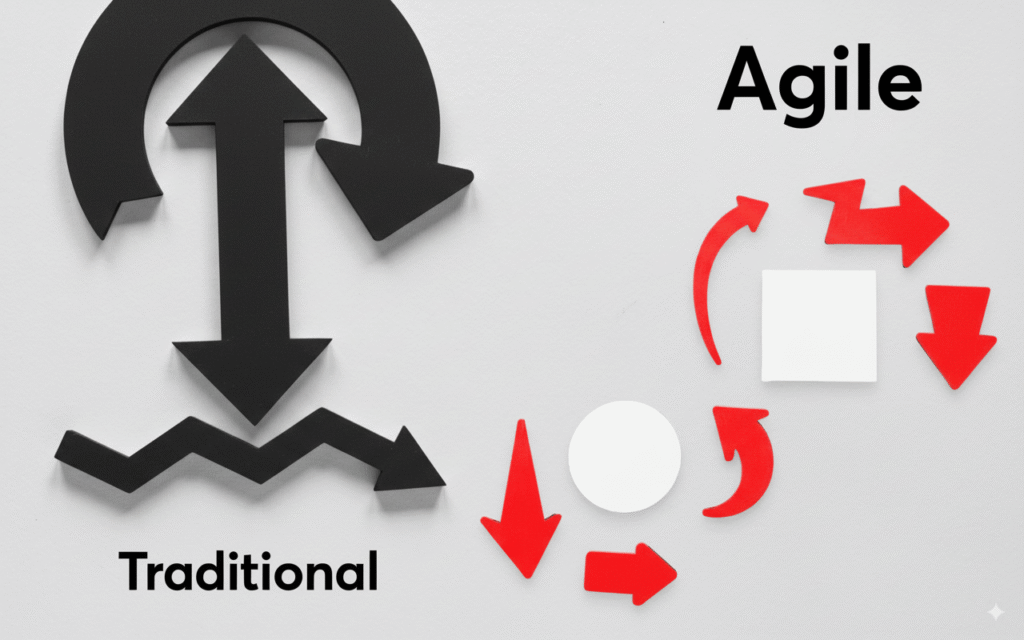
When it comes to building an MVP, the way you approach development can make or break your startup’s success. Below are the main differences between agile MVP development and the more traditional approach—and why agile gives startups a competitive edge.
1. Time to Market
- Agile: Speed is everything for startups. With agile, you launch a basic version quickly, gather insights, and improve along the way. This keeps you ahead of competitors and responsive to market shifts.
- Traditional: Perfecting every detail before launch takes too long. By the time you release, you may have wasted resources and missed valuable opportunities.
2. User Feedback
- Agile: Feedback starts from day one. By putting your MVP in users’ hands early, you can refine based on their real needs instead of assumptions.
- Traditional: Feedback often comes too late—after months of work and heavy investment. If users don’t like it, fixing mistakes becomes costly.
3. Resource Allocation
- Agile: Focus is on essentials. You build only the must-have features, saving time and money while solving the most important problems first.
- Traditional: Teams often invest in “nice-to-have” features that users may never use. This drains budgets and delays progress.
4. Flexibility
- Agile: Change is built into the process. If market trends or user needs shift, you can pivot quickly without derailing everything.
- Traditional: Plans are rigid. Once you’ve committed, making changes is slow, expensive, and sometimes impossible.
5. Risk Management
- Agile: Early testing reduces risks. By validating your idea in small steps, you avoid big failures and catch problems before they escalate.
- Traditional: Long-term planning without iteration builds hidden risks. If the product fails after launch, the losses—financial and otherwise—are much higher.
6. Market Relevance
- Agile: You launch something useful right away and evolve it with real feedback. This ensures your product stays aligned with what the market actually wants.
- Traditional: Spending too long in development risks building something outdated or irrelevant by the time it launches.
Essential Steps for Successful Agile MVP Development
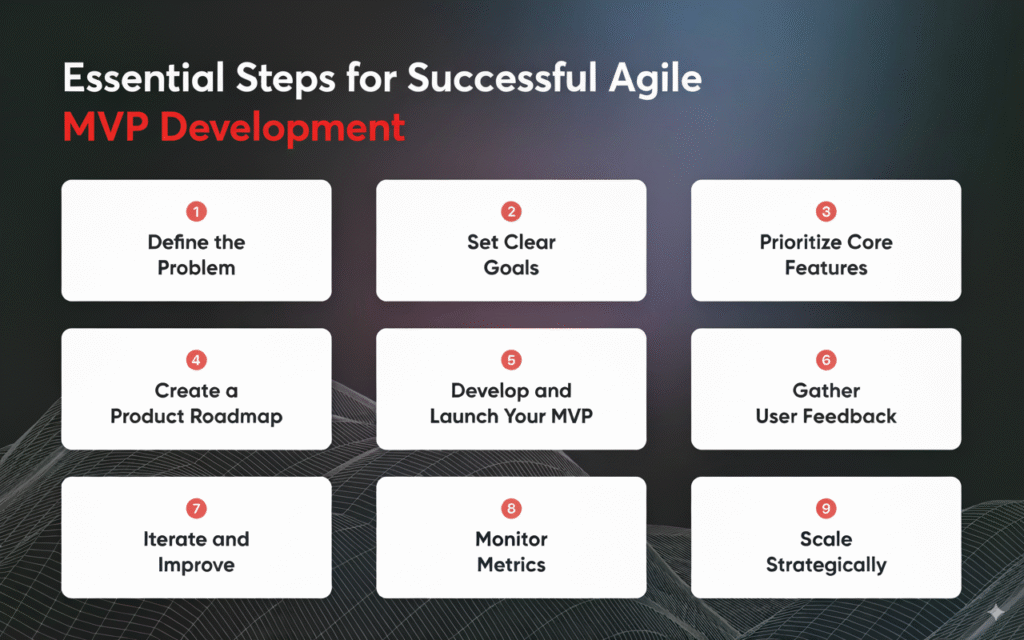
Now that we know what agile MVP development is, let’s walk through the key steps to actually make it happen. These steps help you stay focused, move fast, and build a product that truly connects with your users.
1. Define the Problem Clearly
Start by identifying the exact problem your product is solving. What challenges are your target users facing? Understanding their pain points helps you design a solution that actually matters. This step lays the foundation for everything that follows.
2. Set Clear Goals
Decide what success looks like for your MVP. Do you want to test product-market fit, validate a specific feature, or prove your business model? Clear goals keep your team aligned, help you prioritize tasks, and ensure resources are used wisely.
3. Focus on Core Features
Don’t try to build everything at once. Start with the features that directly solve the main problem. Anything extra can wait until later iterations. This keeps your MVP simple, valuable, and easy for users to understand.
4. Create a Smart Roadmap
Think of your roadmap as your product’s game plan. Break it down into phases—starting with the MVP, then outlining how you’ll grow over time. This helps avoid scope creep, keeps development efficient, and ensures your team knows what’s next.
5. Build and Launch Quickly
Speed is key. Get your MVP into users’ hands as soon as possible. It doesn’t need to be perfect—just functional enough to solve a problem. Early launches give you feedback faster, help you stay ahead of competitors, and prevent wasted effort.
6. Collect Real User Feedback
Once your MVP is live, listen to your users. Their feedback shows you what’s working, what isn’t, and what needs to change. Encourage honest input—it’s the fastest way to make your product better and ensure it stays relevant.
7. Improve Through Iteration
Use feedback to make small but meaningful updates. Each iteration should improve usability, add value, or fix problems. This cycle of constant improvement keeps your product evolving with user needs and market trends.
8. Track Key Metrics
Numbers don’t lie. Measure things like user engagement, retention, and conversions to see how your MVP is performing. These insights help you make smarter decisions and prove whether your product is moving in the right direction.
9. Scale Strategically
Once your MVP has traction, it’s time to scale—but do it carefully. Add features that improve user experience, strengthen performance, and support growth. Make sure your infrastructure can handle more users while keeping quality high. Scaling thoughtfully sets you up for sustainable success.
Avoiding Common MVP Development Pitfalls with Agile

Building a Minimum Viable Product (MVP) isn’t always smooth sailing. Many startups stumble by overbuilding, skipping user feedback, or struggling to align teams. This is where Agile methodologies shine—they help you stay flexible, collaborate better, and keep improving with every step. Let’s look at the biggest mistakes in MVP development and how Agile helps you avoid them.
1. Adding Too Many Features
The Mistake: Teams often try to make the MVP feel like a final product, cramming in too many features. This slows development and distracts from testing the core idea.
Agile Fix: Agile focuses on building just enough. Tools like the MoSCoW method (Must-have, Should-have, Could-have, Won’t-have) help teams prioritize essentials and keep scope under control.
2. Skipping User Feedback
The Mistake: Relying on guesses instead of talking to real users often leads to products that nobody needs.
Agile Fix: Agile bakes feedback into the process. From user interviews to A/B testing, every iteration is guided by real insights—not assumptions.
3. No Clear Success Metrics
The Mistake: Without measurable goals, it’s hard to know if your MVP is working or what to improve.
Agile Fix: Agile encourages setting clear, trackable goals (like engagement or retention) and reviewing them during sprints and retrospectives to guide the next steps.
4. Weak Team Collaboration
The Mistake: Siloed teams (design, dev, business) often work in isolation, causing delays and misalignment.
Agile Fix: Agile thrives on communication—daily standups, retros, and shared documentation keep everyone on the same page and moving toward the same MVP vision.
5. Refusing to Pivot
The Mistake: Teams sometimes stick to a failing idea instead of adapting to market feedback.
Agile Fix: Agile makes pivoting easier. By learning and iterating quickly, teams can adjust direction without wasting resources or time.
6. Ignoring User Experience (UX)
The Mistake: Focusing only on functionality while neglecting design makes the product clunky and frustrating to use.
Agile Fix: Agile puts users at the center. UX feedback is gathered early and often, ensuring the MVP is not only functional but also simple and enjoyable to use.
In short, Agile helps startups avoid the usual MVP traps by keeping development lean, user-focused, and adaptable. Instead of wasting time and money, you move closer to a product people actually want.
Partner with TorontoDigits for Agile MVP Development Success
At TorontoDigits, we help startups and enterprises bring their ideas to life with smart, scalable Minimum Viable Products (MVPs). Our Agile-driven process ensures your MVP isn’t just a quick prototype—it’s a well-structured product that adapts to user needs and grows with your business.
We put users at the center, combining rapid iterations, continuous feedback, and data-backed decisions to create digital solutions that deliver real impact.
Agile MVP Development – Our Proven Approach
- Discovery & Planning – We work with you to set clear goals, define must-have features, and map out a roadmap aligned with your vision.
- Iterative Development – Short sprints mean faster releases, ongoing testing, and quick refinements.
- User-Centered Design – Our UX/UI experts ensure your MVP is simple, intuitive, and engaging.
- Feedback-Driven Growth – We gather user insights at every stage to keep improving the product.
- Scalable & Flexible Architecture – Built to grow as your business grows.
- Cross-Team Collaboration – Our developers, designers, and strategists stay aligned with your business goals.
- Data-Driven Decisions – Key metrics guide every iteration, making your MVP smarter over time.
With TorontoDigits, you gain more than an MVP—you gain a strategic partner dedicated to refining, scaling, and future-proofing your vision using the best of Agile.
👉 Ready to turn your idea into a market-ready product? Let’s build it together.
Wrapping Up: Driving Startup Success with Agile MVP Development
Agile MVP development gives startups a smarter way to bring ideas to life. Instead of overloading a product with unnecessary features, it focuses on small steps, real user feedback, and flexibility. This lean approach ensures your product truly connects with your audience while avoiding wasted time and effort.
Big names like Dropbox and Slack started this way—launching quickly, learning fast, and improving continuously. By adopting Agile, startups can reduce risks, speed up time-to-market, and build products that actually fit market demand.
For any startup looking to turn ideas into successful solutions, Agile provides the structure to stay focused and the flexibility to adapt as you grow.
FAQs on MVP in Agile
1. What is a minimum viable product in Agile?
It’s the simplest, functional version of a product created in Agile sprints to validate an idea and gather real feedback.
2. How does a minimum viable product fit into Agile project management?
MVPs align with Agile by focusing on iterations, measurable goals, and continuous user-driven improvements.
3. What is the Agile approach to MVP?
The Agile approach builds MVPs in short cycles, releasing early, and adapting based on user feedback.
4. How does MVP relate to Agile?
MVP acts as the starting point in Agile, validating assumptions quickly and shaping the product direction.
5. What comes after MVP in Agile?
After MVP, teams may build an MMP (Minimum Marketable Product)—a more polished version ready for wider release.
6. Is MVP part of Agile?
Yes, MVP is a core part of Agile product development, helping teams learn fast and minimize risks.
7. What are MVP and MMP in Scrum?
In minimum viable product Scrum, MVP is the first version that solves core problems, while MMP is the next stage that’s polished enough for a broader market.
8. Is MVP part of Scrum?
Yes, MVP development in Scrum happens through iterations (sprints) and continuous refinement.
9. What is an MVP roadmap?
A minimum viable product roadmap outlines how an MVP will evolve—starting simple and expanding features gradually based on data and feedback.

